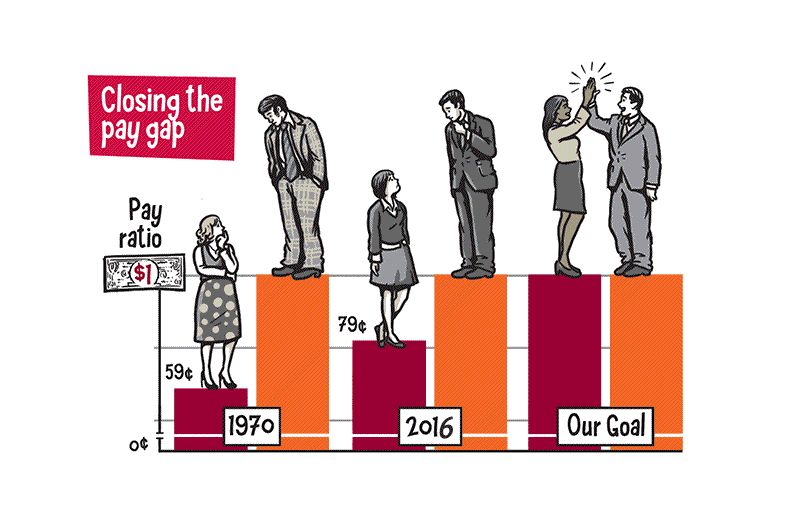

Share
If you’re a working woman who wants equal pay with a working man, stay out of Wyoming, and most of Louisiana.
On the other hand, if you really want areas where the pay is equal, head for parts of New York City and Los Angeles, but with a warning: The pay for both sexes may be low.
Those are the findings, Congressional District by Congressional District, of a study of the median pay of working women and men by the National Partnership for Women and Families. It issued the analysis, based on federal data, to mark Equal Pay Day on April 12.
Overall, NPWF reported the median income for a working woman last year was 79 cents for every dollar a white non-Hispanic working man earned. The median is the point where half the group is above the figure and half below.
Equal Pay Day marks the day when the median pay for a working woman finally catches up to the median pay for a working man in the previous year. In dollar terms, the median working woman loses $10,762 compared to her male counterpart.
The pay gap is worse for African-American women and Latinas – 60 cents per dollar and 55 cents per dollar, respectively – compared to white, non-Hispanic men.
“This analysis is a sobering reminder of the serious harm the wage gap causes women and families all across the country and especially women of color,” said National Partnership President Debra Ness.
“At a time when women’s wages are so critical to the economic well-being of families, the country is counting on lawmakers to work together to advance strong fair and family friendly workplace policies that would promote equal pay. There is no time to waste.”
The pay gap between working men and working women is particularly yawning in Wyoming (69 cents) and in four of the six congressional districts in Louisiana. Outside of Louisiana’s 1st and 2nd districts — New Orleans and its suburbs — the median wage for a Louisianan working woman ranged from 61 cents to 66 cents per working man’s dollar.
That 61-cent figure for a working woman in Louisiana’s Cajun country 3rd District tied with the 11th District of Texas for the widest median wage gap in the country. The Texas district includes Odessa, Midland, San Angelo and surrounding rural areas.
Meanwhile the median wage for a working woman exceeds that of the working man by a few cents in a handful of districts, but with one qualifier. In three New York districts (Harlem, the south Bronx, and one that combines the southeast Bronx and part of Queens) and one in L.A. (Westlake-downtown-Koreatown-Filipinotown), median wages for workers both sexes are very low.

